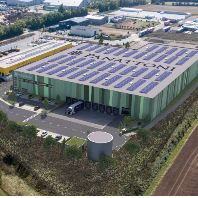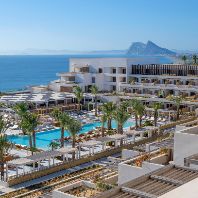Yesterday, the Ministries of Spatial Planning, Housing and the Environment, of Transport, Public Works and Water Management, of Agriculture, Nature and Food Quality and of Economic Affairs together presented the Nota Ruimte (White Paper on Spatial Planning) to the House of Representatives of the States General. This White Paper gives direction to more than € 20 billion of public investments in the Netherlands over the next decades.
For the international competition position of the Netherlands, the development of the mainports Amsterdam and Rotterdam is very significant. The White Paper on Spatial Planning enables this development, taking into account nature, environment, noise pollution and safety.
The State stimulates the development of the Amsterdam Zuidas into an international business toplocation. For the development of the Rotterdam harbor, space will be created for 300 hectares of business space in the north edge of the region ‘Hoekse Waard’. Due to its prominent international position in investigation and development, the region Eindhoven/Southeast Brabant has been assigned as ‘brainport’ in the spatial policy.
By resolving traffic and transport bottle-necks, the State focusses on the main connection axes above other bottle-necks. This guarantees a good connection of the mainports - and with that the North and South wing of the Randstad - with the national and international metropolitan areas. For the major transport project Zuiderzeelijn, the State is starting a plan study. In the first phase, market parties are invited to develop plans for a magnetic railroad or high speed train. The main connection axes (including the Zuiderzeelijn) can play an important role for the development of the Northern part of the Netherlands.
Urbanization
In the meantime the government emphasizes to concentrate the urbanization. The government has indicated six national urban areas: Randstad Holland, Brabant City, South-Limburg, Twente, Arnhem-Nijmegen and Groningen-Assen. These networks all have their own economic importance. The cooperation of the national urban networks is mainly focussed on long term opportunities.
Leisure is one of the conditions for a pleasant urban atmosphere as well as for a good establishment climate. The formerly announced buffer zones will play a major role to achieve this.
Agenda of the White Paper on Spatial Planning
For the period 2011-2020 the White Paper on Spatial Planning gives direction to about € 20 billion of public investments in the Ruimtelijke Hoofdstructuur (Spatial head structure). This includes the large projects Schiphol-Almere, Zuiderzeelijn and the PMR Rotterdam. This amount will be completed with the accessibility investments resulting from the White Paper on Mobility. Later this year the government will announce the total amount.
The major part of the spatial investments in the Netherlands will be done by private parties and other authorities. The Uitvoeringsagenda Nota Ruimte (the Executions Agenda of the White Paper on Spatial Planning) offers a view in the execution of the spatial policy and the reserved financial means until 2014.
Background
On 27 April 2004 the White Paper on Spatial Planning has been presented to the House of Representatives of the States General. The White Paper has been set up and prepared by the Ministries of Spatial Planning, Housing and the Environment, of Transport, Public Works and Water Management, of Agriculture, Nature and Food Quality and of Economic Affairs, under the leadership of coordinating minister Dekker of Spatial Planning, Housing and the Environment. Together, the Ministries have set up one White Paper on Spatial Planning, that contains all outlines of spatial policy, and directs the connected sectoral policy.
In addition to the White Paper on Spatial Planning, the government will work out the regional economic policy in the Gebiedsgerichte Economische Perspectieven (GEP






